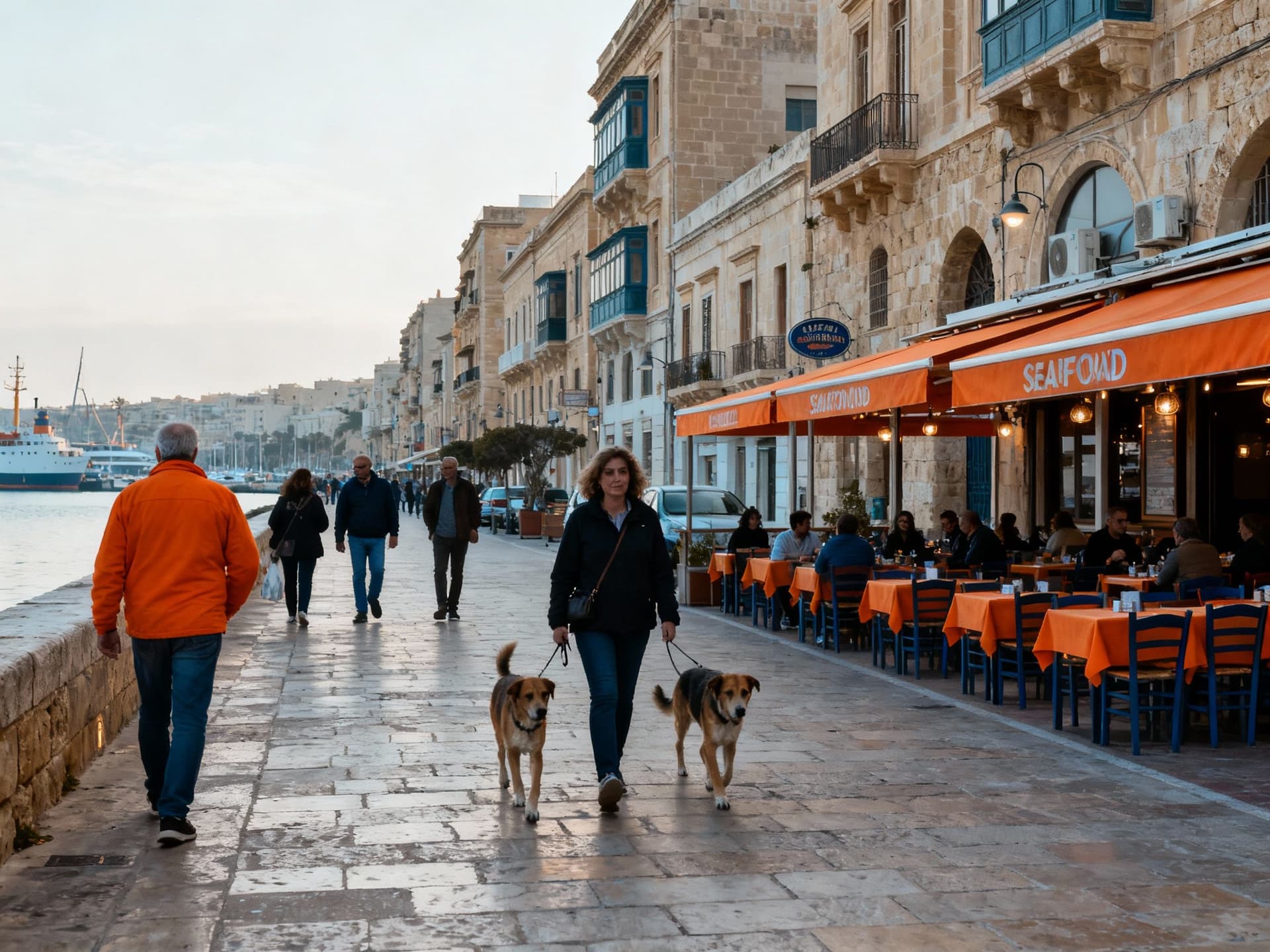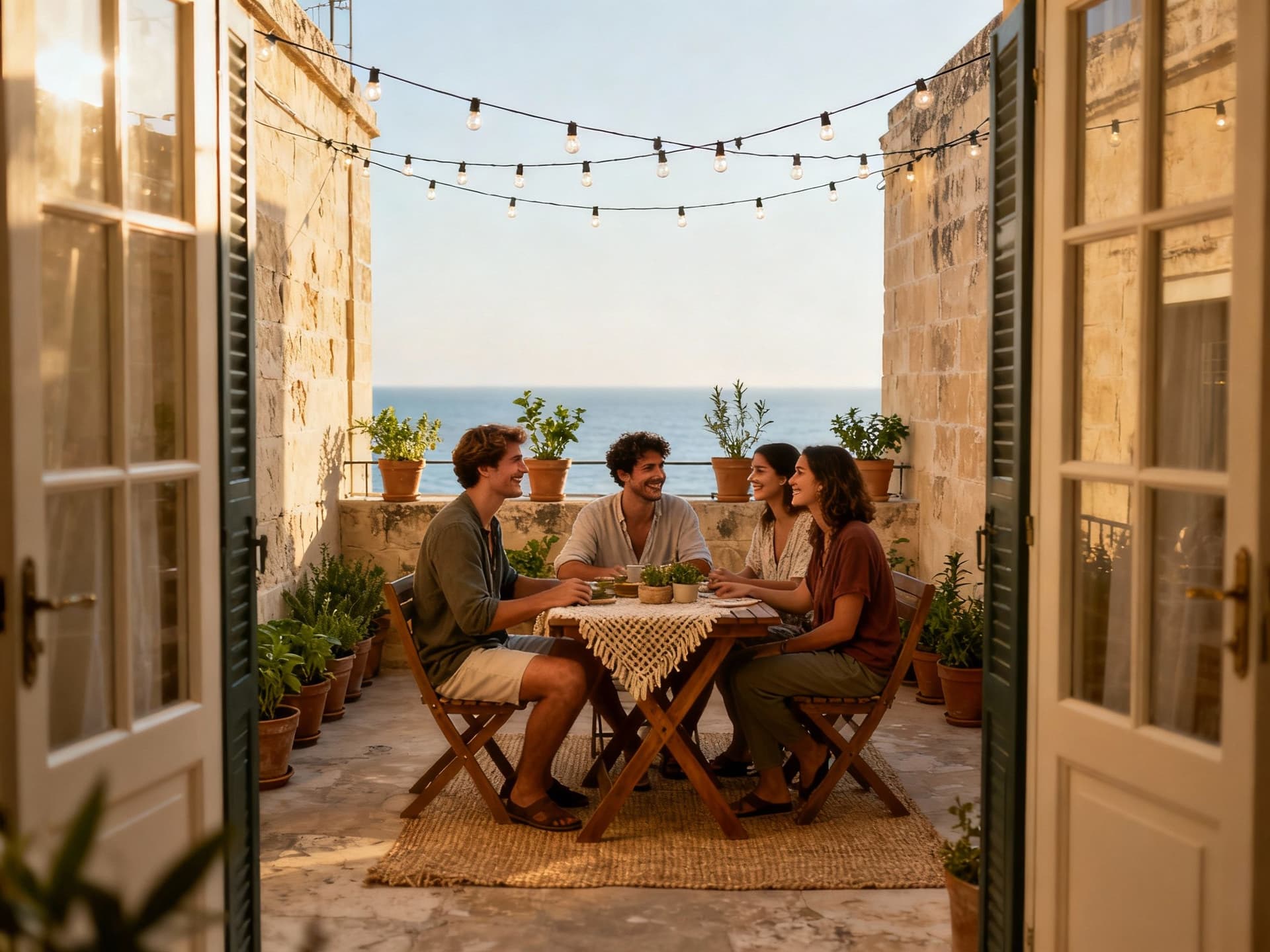Malta: Lifestyle, Transport and the Yield Trade‑Off
Malta delivers compact Mediterranean living and steady tourist demand, but tight supply and location‑specific infrastructure reprice yields—underwrite lifestyle with data.
Imagine weekday mornings in Sliema: espresso at Caffe Berry, delivery scooters weaving past limestone façades, and the sea visible between narrow streets. The island feels small-scale and intensely local — neighbourhoods trade anonymity for ritual: markets, pastizzi stops and childhood friends who still live next door. That compactness is Malta’s promise to international buyers: a lifestyle where the café you choose and the bus route you take materially shape your return on investment. But the same intimacy that charms also concentrates market risk — supply constraints, tourist flows and a dense transport web all reprice property returns.
Living the Malta lifestyle: everyday scenes that sell

Malta’s day-to-day is sharply Mediterranean and surprisingly urban: fishermen in Marsaxlokk set up by dawn, office workers commute along the Valletta–Sliema corridor, and evenings light up in St Julian’s with staggered dining times rather than one peak. The island is not a single mood — Valletta’s baroque density feels different from Mellieħa’s seaside quiet or Gozo’s village calm — and that variety is what makes place selection decisive for investors looking at tenant profiles and seasonal demand. Expect strong short‑let demand in the north harbour towns, steadier long‑let interest near business hubs, and neighbourhoods where families prefer ground-floor maisonettes with tiny courtyards.
Sliema & St Julian’s: coastal convenience with rental depth
Sliema and St Julian’s sell the lifestyle of walkable seafront, international cafes and coworking spaces — and they sell it at a premium. Average prices in the north harbour cluster regularly sit above the national figure, frequently reported near €3,000–€4,000/m² in market summaries, which attracts students, professionals and higher‑spending tourists. For investors that means dependable booking velocity for short lets and a steady pipeline of corporate and remote‑worker tenants, but also lower gross yields versus inland towns.
Gozo & the south: quieter life, different returns
If you want quiet terraces and larger footprints, Gozo and southern localities offer it — often at 30–40% lower entry prices than the north harbour. That value comes with tradeoffs: fewer high‑season tourists, slower capital appreciation and a tenant pool more likely to sign long lets. For lifestyle buyers who prioritise space and community over immediate yield, these areas are compelling; for yield‑hungry investors, they require precise underwriting of occupancy and operating costs.
- Lifestyle highlights (places you’ll say you discovered): Sliema promenade for morning runs and sunsets; Marsaxlokk fish market on Sundays; Valletta’s cafes around Republic Street; Għajn Tuffieħa clay cliffs for weekend swims; Il-Belt Valletta’s late‑night theatre and museums.
Making the move: where lifestyle meets infrastructure

Malta’s charm is transport‑intense: short distances hide significant connectivity differences. The Valletta–Sliema–St Julian’s corridor benefits from the densest public transport and the most frequent tourist traffic, supporting higher short‑let occupancy. National average gross yields for residential property hover around 4% (Global Property Guide), meaning rental income alone seldom offsets premium coastal prices — capital growth and tax planning matter more in the total return calculation.
Property types and how they translate to daily life
Maltese properties range from terraced historic maisonettes to new apartments with roof terraces. Maisonettes and townhouses give you private outdoor space — valuable for families and long‑let tenants — while modern apartments near the waterfront attract tourists and professionals. Choose property type by expected tenancy: short lets favour modern, finished apartments close to transport; long lets and families prefer larger, character homes inland.
How local experts change outcomes
- 1. Ask agents for net yield case studies: require actual, recent management accounts from comparable assets; 2. Validate occupancy with multiple booking platforms and municipal records; 3. Check service charges and maintenance history for older limestone buildings; 4. Insist on transport-time mapping: how long is the commute at 08:30 vs 18:30; 5. Stress‑test pricing with low-season scenarios (November–March) and high-season multipliers; 6. Require clarity on deed restrictions for rentals or property alterations.
Insider knowledge: what expats wish someone told them
Expat experience in Malta often follows a similar arc: initial enchantment, operational friction (permits, utilities, renovation timelines), and eventual deep attachment to local rhythms. Tourists exceeded 3.5 million in 2024, boosting demand for short lets in central areas but also creating seasonal noise — festivals and conference weeks can double nightly rates but do not change underlying rental yield arithmetic. Successful expats learned to pair lifestyle choices (a café, a club, a school) with hard checks on infrastructure: parking, broadband reliability and ferry timetables if choosing Gozo.
Language, culture and community integration
English is an official language, which flattens administrative friction for many buyers, but Maltese social networks remain tight and place‑based. Neighbourhood acceptance matters: renovating a Valletta townhouse requires more stakeholder diplomacy than fitting out a new block in Birkirkara. Expect locals to prioritise family amenities, weekly rituals and proximity to the parish or square.
Long‑term lifestyle and market drivers
Malta’s constrained land and steady inward migration (NSO figures show population growth driven by net migration) create structural supply pressure that supports prices over time. But development approvals slowed in 2023 and 2024, tightening future supply and increasing the importance of location-level evaluation. For long‑term owners this means prioritise assets with adaptable layouts and low maintenance liabilities, and factor national tourism cycles into cash‑flow forecasts.
- Red flags local buyers should watch: unstable short‑let regulations in specific zones; high service charges in older converted buildings; unreliable broadband in rural pockets; structural issues in unrenovated limestone stock; unclear title histories on older townhouses.
If Malta made you fall in love with small‑city Mediterranean living, treat the purchase like assembling a lifestyle portfolio: pick a primary neighbourhood that delivers the life you want, and a secondary holding chosen for yield resilience. Work with a local agency that shows recent P&Ls, has on‑island property management, and maps transport and seasonality into underwriting. Visit in different seasons, walk the commute at peak hour, and insist on evidence — not promises — about rental demand.
Conclusion — Malta is compact, connective and commercial in its charms. The island trades bigger margins for concentrated operational nuance: lifestyle and infrastructure are inseparable here. Fall in love with the espresso, the pocket beaches and the theatre nights — then underwrite the story with yields, vacancy stress‑tests and a local team who knows which lane (short‑let or long‑let) actually works in each neighbourhood.
Swedish financier who guided 150+ families to Spanish title deeds since relocating from Stockholm in 2012, focusing on legal and tax implications.


